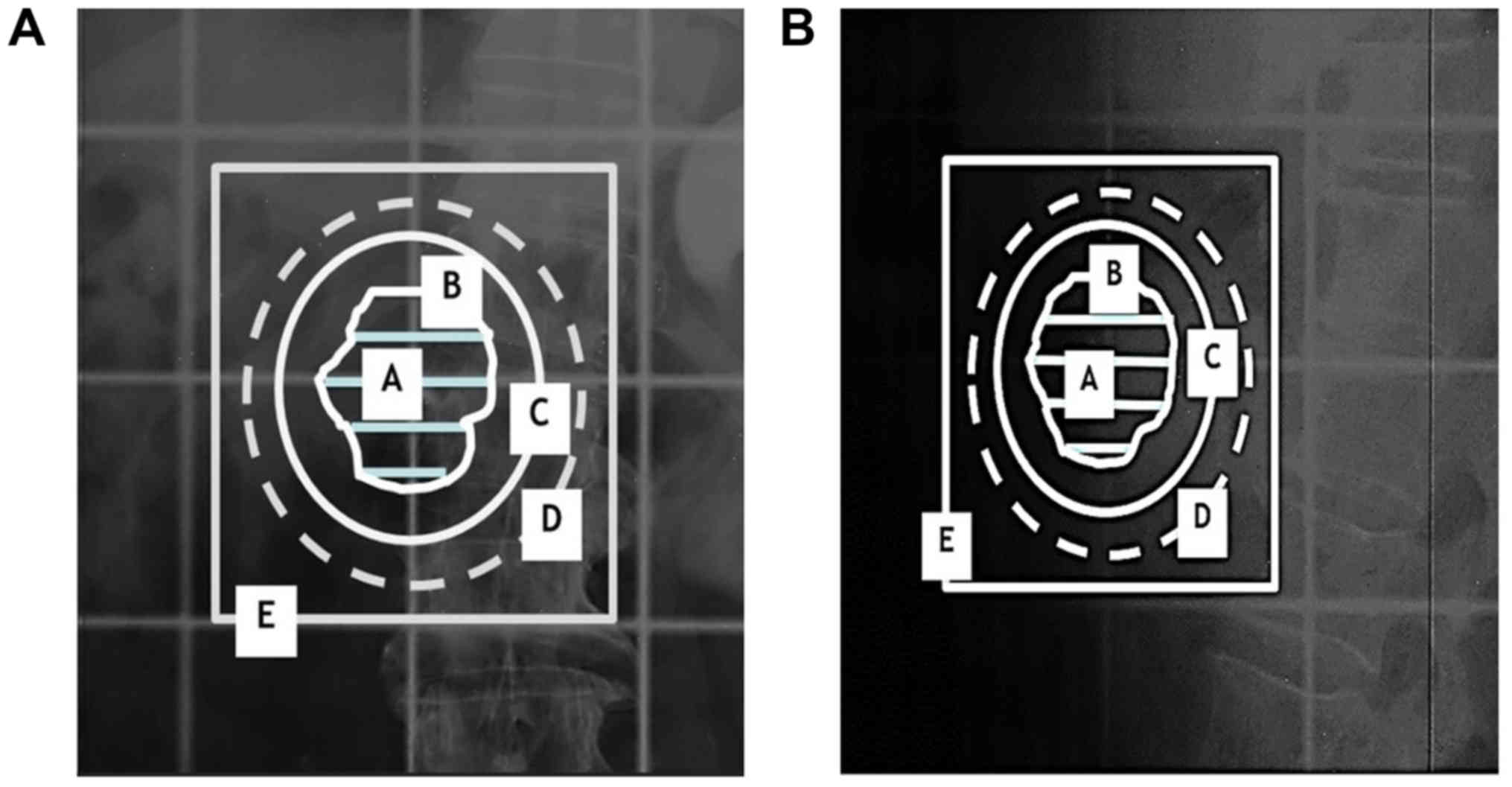Feasibility of 2D‑conformal radiotherapy for pancreatic carcinoma
- Authors:
- Published online on: September 4, 2018 https://doi.org/10.3892/ol.2018.9389
- Pages: 5939-5945
-
Copyright: © Buwenge et al. This is an open access article distributed under the terms of Creative Commons Attribution License.
Metrics:
Total
Views: 0 (Spandidos Publications: | PMC Statistics:
)
Total PDF Downloads: 0 (Spandidos Publications: | PMC Statistics:
)
Abstract
The purpose of the present study was to propose an optimized 2D technique (2D‑conformal) for radiotherapy (RT) of pancreatic cancer (CaP). This technique is based on double simulation which resolves the problems of radiographic image distortion. Five patients with locally advanced CaP were identified and enrolled. Treatment planning was simulated in 3 different ways: Two dimensional‑standard (2D‑SRT), 2D‑conformal (2D‑CRT), and three dimensional‑conformal (3D‑CRT) techniques for 10 MV LINAC. Simulation for a cobalt machine was also performed using only the 2D techniques. 2D‑SRT technique was planned with fields definition based on anatomical landmarks (bone and duodenum). 3D‑CRT was planned with standard virtual simulation technique, and 3D dose evaluation and optimization. 2D‑CRT technique was based on manual information transfer from a diagnostic CT‑scan to simulation radiograms. To eliminate the X‑ray image distortion, a double simulation was employed and the profile of the GTV was delineated on radiographs bearing the simulator isocenter into the target center. Concerning target irradiation of either LINAC (10 MV) or cobalt source, the PTV constraints (ICRU 62) were met in all patients (Dmin >95%, Dmax <107%) with all techniques (2D‑SRT, 3D‑CRT, 2D‑CRT). For organs at risk irradiation, in terms of Dmax to both duodenum and spinal cord, similar results were recorded with all techniques using the LINAC (10 MV). Liver and kidneys Dmean gradually improved from 2D‑SRT to 2D‑CRT and 3D‑CRT. The 2D‑CRT compared to 2D‑SRT technique, halved the average dose to the liver and reduced to about 1/3 the average dose to the kidneys. With the cobalt source, using the 2D‑CRT produced a reduction of Dmean to the kidneys (median from 30.7 to 16.9%) and liver (median from 33.4 to 22.3%) compared to 2D‑SRT. This analysis showed better planning results in RT treatment of CaP while using a 2D‑CRT compared to 2D‑SRT technique and therefore presents an example for optimized 2D RT use.












